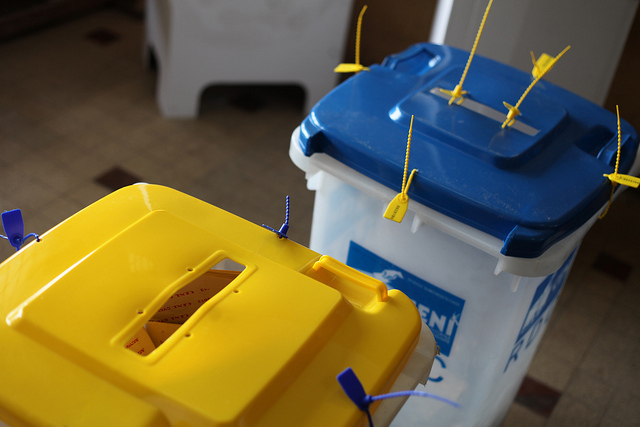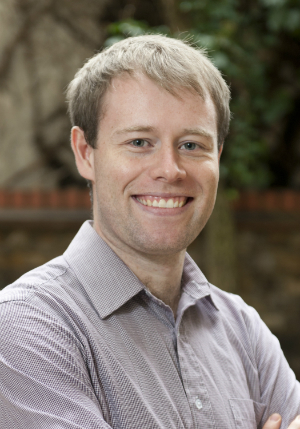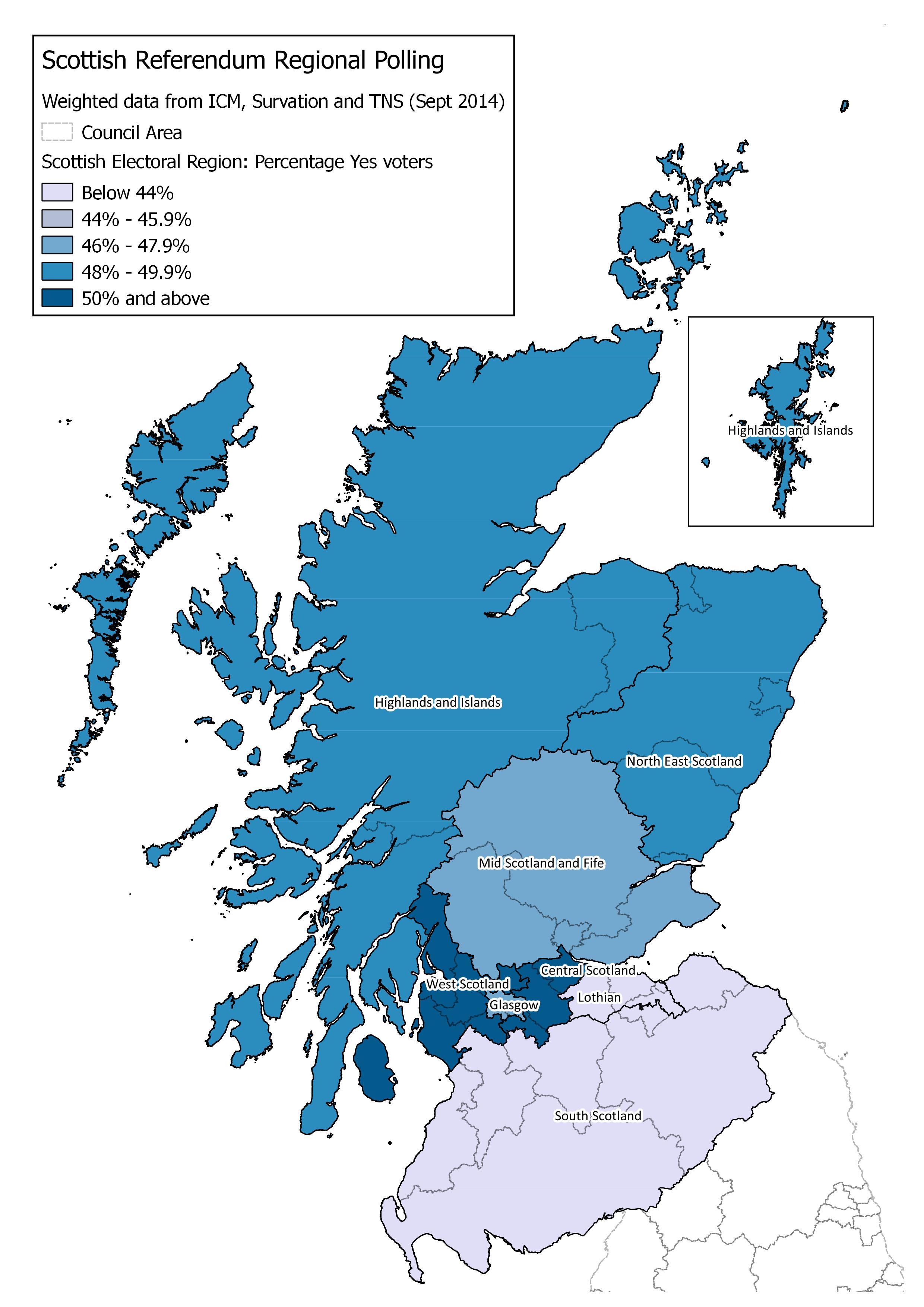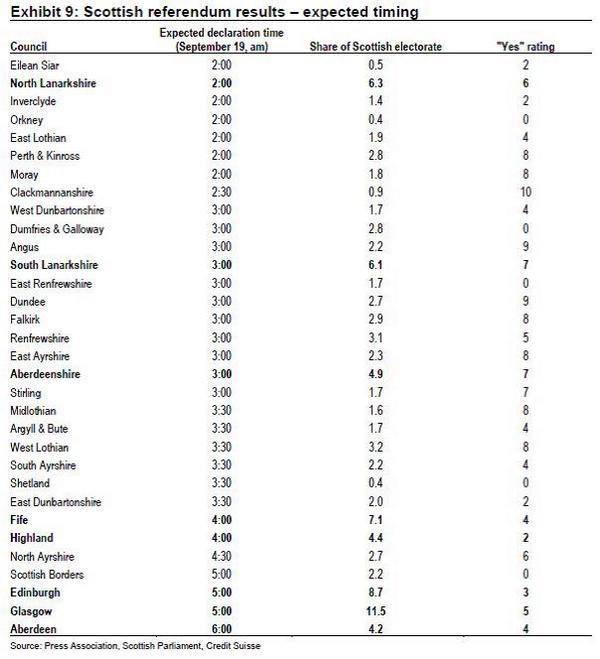The Scottish Independence Referendum, how will it all unfold?
After days, weeks and months of argument, controversy and preparation, Scotland will go to the polls tomorrow, with a long day of voting and a long night of counting ahead. Carl Cullinane outlines the nuts and bolts of how Scotland’s big day will go.

Credit: MONUSCO, CC BY 2.0
How to vote?
Polls will be open from 7am until 10pm on Thursday 18th of September. All those issued with a polling card will be allocated to their nearest polling centre, one of 5,579 across the country. Those who have been issued with a ballot paper at 10pm will still be allowed to vote, but arriving in plenty of time is encouraged.
Postal votes which arrive from the 789,024 voters registered to do so will continue to be accepted right up until the 10pm deadline.
Who can vote?
To be eligible to vote in the referendum one must be registered to vote in Scotland (which 97% of the eligible population are), 16 or over on the 18th September and:
-a British Citizen living in Scotland,
-a European Union citizen living in Scotland, or
-a qualifying Commonwealth citizen living in Scotland.
Additionally, service personnel posted outside Scotland along with their families may also vote, if registered.(Further information is available here.)
A total of 4,285,323 people are registered to vote, the largest electorate in Scottish history. This includes almost 120,000 voters registered in the last month alone, before the deadline on 2nd September. Turnout has long been expected to be over 80%, and with the electrifying effect of the last few weeks of campaigning, could be even higher.
The extension of the right to vote to 16 and 17 year olds has been a significant development for UK democracy. But, nonetheless, the limiting of the franchise to only those living in Scotland (excluding Scots elsewhere in the UK and abroad) is a controversial one, and has been discussed here in more detail earlier this week.
What will be asked?
There will be one question on the ballot paper:
“Should Scotland be an independent country?”
This is the wording proposed by the Scottish National Party, and approved by the Electoral Commission. The SNP originally proposed the question “Do you agree that Scotland should be an independent country?”, but this was altered in favour of the current wording. Nonetheless, the SNP’s power, as the ruling party in the Scottish Assembly, to formulate the question has been significant. However, offering the binary options of ‘Yes’ and ‘No’ to independence on the ballot paper, rather than including a second question on further devolution (the widely popular, but often vaguely defined ‘devo-max’) was a condition of the UK Government’s granting of the referendum. As many polls have indicated the attraction of devo-max, the existence of two options rather than three on the ballot paper has had a hugely significant effect on the campaign.
Who is overseeing the referendum?
The UK Electoral Commission approved the referendum question, provided impartial information to voters, and has regulated campaign spending by both the ‘Yes’ and ‘No’ campaigns, along with third parties. ‘Yes Scotland’ represent the pro-independence side, with ‘Better Together’ leading the pro-union campaign.
The Electoral Management Board for Scotland will coordinate polling across Scotland and oversee the count process. Mary Pitcaithly, the Convener of the EMB, has been appointed Chief Counting Officer, and will operate the results collation centre from the Royal Highland Centre at Ingliston.
What is the current state of play?
The ‘No’ side has held a solid lead since the referendum was announced in 2012. Though the lead ebbed and flowed over the past two years, by July this summer only one poll had ever put ‘Yes’ actually ahead. However, the final few weeks of the campaign has seen a dramatic tightening of the race, sparked by a poor performance in the second televised debate by Alistair Darling, the figurehead of Better Together, and several mis-steps by the ‘No’ campaign. In the last month, the consensus of polls has indicated the race is almost a toss-up, with several, from YouGov and ICM, showing what would be a dramatic ‘Yes’ lead.
Nonetheless, going into the final couple of days, most polls continue to give ‘No’ a narrow advantage. The predictive performance of the polls will be a very interesting subplot on Thursday night, with the closeness of the race putting a serious strain on the pollsters’ methodologies. Much could hinge on turnout in the final shakeup.
Credit: WhatScotlandThinks.org
How will the count proceed?
Counting will begin immediately at 10pm when the polls close. Votes from each polling centre will be transported to the Count Venues in each of the 32 council areas in Scotland. Each venue will have a Count Officer who will oversee the count and announce results. Due to variations in geography and population distribution, the process of transporting and counting will differ significantly between areas. In particular, the area of Argyll and Bute does not usually begin counting votes until the following day, due to difficulties transporting votes from remote locations overnight, but on this occasion, special arrangements are being made. In the remotest parts of Scotland separate satellite-monitored counts and special transport provisions, including, in the case of some islands the transport of votes by helicopter will be used in order to achieve a timely result.
How is the evening likely to develop?
A first count will verify ballots and check turnout, before the Yesses and Noes are counted. These turnout figures will be announced by area as they come in. Relative turnout figures in predominantly ‘Yes’ or ‘No’ tending areas will provide the first tentative indications of how the night may go. Polls have shown substantial regional variation in voting preferences. as the pooled data shows below, and this will be crucial to take into account when assessing the progress of results as the night goes on.
The second count will then count which way each vote has gone. Once the Count Officer has presented their final result to the National Count Centre and been verified, it will be announced. Due to the aforementioned differences in size and geography, the spread of timings of when these announcements are expected is quite wide:
Source: Press Association
Some results could begin to appear as early as 1am, but more likely from around 2am. With most council areas reporting between 3am and 4am, this seems the most sensible (if it could be called that) time to set an alarm. However, these timings are very rough estimates, and can be affected by weather, transport issues, large turnout or local recounts.
As can be seen from the table, several of the biggest areas don’t report until the very end, with the final three of Edinburgh, Glasgow and Aberdeen making up almost 25% of the registered electorate, meaning that the result is likely to be in the balance until close to dawn on Friday morning.
How will the final results be announced?
Chief Counting Officer Mary Pitkaithly will announce the result from the National Count Centre in Ingliston. The final total will only be declared when all 32 Count Venues have returned and verified their results. However, the CCO can potentially announce a final decision when it becomes mathematically impossible for the losing side to overhaul the opposition’s votes. Given the closeness of the polls and the size of the council areas likely to announce last, this appears unlikely.
Timing for the final result is currently estimated at around 7am on Friday morning. However this is obviously inexact, for the reasons outlined above.
Can the result be appealed?
There is no provision for a national recount. However, recounts in the individual Count Venues can be requested by the campaigns in the event of any issues. The overall result of the referendum could only be challenged by judicial review, which must be done within six weeks of the result.
How best to follow events?
All the major television news organisations will be running coverage through the night, with the BBC’s flagship coverage beginning at 10:35pm on BBC One, and ITV’s coverage starting 5 minutes later, both imaginatively titled ‘Scotland Decides’.
LSE blogs British Politics and Policy and EUROPP will be running a live blog on Thursday evening through to Friday morning, with results and commentary as they come in. Expert reaction and analysis pieces will be published on the Democratic Audit, BPP and EUROPP blogs from Friday onwards. Regardless of result it promises to be very interesting indeed.
—
Note: this post represents the views of the author and not those of Democratic Audit or the LSE. Please read our comments policy before posting.
—
 Carl Cullinane is Research Assistant at the Democratic Audit, and is responsible for conducting in-house research along with contributing to the blog and other DA outputs. He holds a degree in Philosophy and Political Science from Trinity College Dublin in 2005, along with MSc’s in Philosophy & Public Policy from the LSE and Applied Social Research, also from Trinity College.
Carl Cullinane is Research Assistant at the Democratic Audit, and is responsible for conducting in-house research along with contributing to the blog and other DA outputs. He holds a degree in Philosophy and Political Science from Trinity College Dublin in 2005, along with MSc’s in Philosophy & Public Policy from the LSE and Applied Social Research, also from Trinity College.
He has worked for the Irish Ombudsman for Children, the Economic and Social Research Institute, and NatCen Social Research. He joined the Democratic Audit in Summer 2014, and can be found on twitter at @cullinanecarl








 Democratic Audit's core funding is provided by the Joseph Rowntree Charitable Trust. Additional funding is provided by the London School of Economics.
Democratic Audit's core funding is provided by the Joseph Rowntree Charitable Trust. Additional funding is provided by the London School of Economics.
Estimated result times
“@democraticaudit: https://t.co/jd6PIrGnyl #indyref #indyrefallnighter https://t.co/oaDi35PhRL”
What’s happening at the moment? What should be happening soon? https://t.co/zP4hXyZCvj #indyref #indyrefallnighter https://t.co/zRZqxEEZoL
Via @fdelond earlier today, a useful guide by @democraticaudit outlining how #indyref will proceed overnight. https://t.co/Hj9eeKQpkw
What happens next? An FAQ: https://t.co/zP4hXyZCvj Plus: Reflections on the campaign, a festival of democracy:https://t.co/WM5LBbTYZi #indyref
RT @fdelond: For all the con law/politics nerds this outlines how the count will proceed in #indyref overnight. https://t.co/xQI0lQh7CM
@Widerife81 @janetinkler @LSEpoliticsblog The table near the bottom here gives proportions of registered electorate: https://t.co/H3CJTh3N6V
Looking for info about today’s #indyref – check out @CullinaneCarl on @DemocraticAudit https://t.co/PmUxm4yuKS
Looking for an “all you need to know” guide to the referendum? Check out @democraticaudit https://t.co/izMBS6aNn8 #indyref
Great guide to the referendum from @CullinaneCarl on @DemocraticAudit today https://t.co/JfzFb5xdq0
Com s’organitza i es regula la jornada d’avui a Escòcia? Qüestions pràctiques a @democraticaudit. https://t.co/PBqZjedsmv Via @xavier_arbos
@garydunion Our guide to a long day (and night) of #indyref: https://t.co/julApDpAeN https://t.co/unsWkCA11P
Our guide to Scotland’s big day (and night): https://t.co/5TCyLaod23 #indyref
I’ve gone and done a guide to today’s #indyref. Everything (maybe not quite) you need to know, from polls to timings. https://t.co/0kBki58HHQ
Key details and how to follow the Scottish referendum: https://t.co/IvB35YAVUa
It’s going to be a long night! Great overview of how tomorrow’s #indyref will unfold https://t.co/v9cndhox0B via @democraticaudit
Great comprehensive primer on how #indyref unfolds tomorrow from @cullinanecarl writing for @democraticaudit https://t.co/0OrgvVLhqa
Two excellent guides to #indyref night from the @democraticaudit (https://t.co/HZx97FYOkd) and @Politics_UEA (https://t.co/zYvRikdnEd)
The Scottish Independence Referendum, how will it all unfold? https://t.co/2OZfLXfgNu
Our FAQ for tomorrow’s Scottish #indyref proceedings: https://t.co/2B8JtDODQK Everything (maybe) you need to know. https://t.co/GkGrKrX11e
Behold @democraticaudit’s one stop guide to #indyref useful for every citizen: https://t.co/oL7Udk0kdB
Everything you need to know about how Scotland’s Independence Referendum will happen and how will it all unfold? https://t.co/XGfMOEQ52P
What’s going to be happening tomorrow https://t.co/lF7nssxmCh #indyref
I’ve written a primer for tomorrow’s #indyref for @democraticaudit. Not everything you needed to know, but I tried. https://t.co/00jUlJviDP
The Scottish Independence Referendum, how will it all unfold? https://t.co/WBwBQUzYWF